For the longest time, I shared content across different social platforms—Twitter, LinkedIn, Instagram—but I had one big question I couldn’t answer: Which of these posts is actually driving results?
On the surface, it looked like some posts were doing well. A LinkedIn update might get 50 likes, or a tweet might be retweeted dozens of times. But I had no clue whether those posts were actually bringing people to my website, generating leads, or contributing to sales. Engagement numbers felt nice, but they didn’t tell the whole story.
That’s when I discovered UTM parameters.
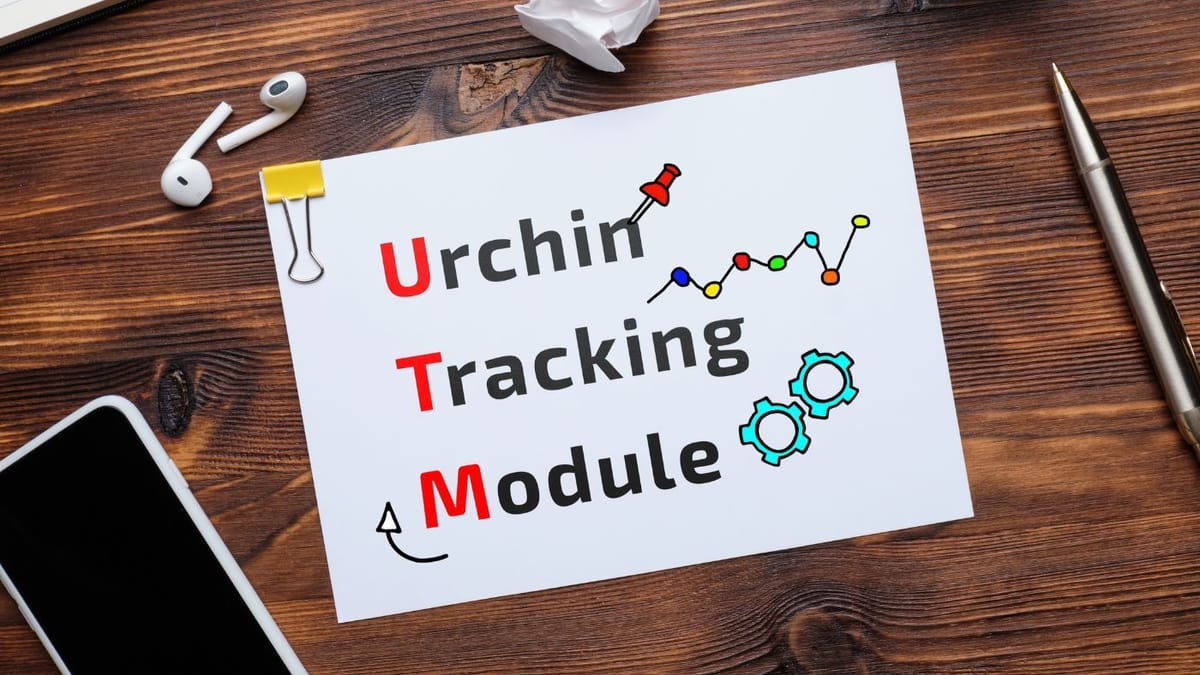
They’re small tags you can add to any link, and they transform your marketing from guesswork into measurable data. With UTMs, I could suddenly see exactly which platform, post, or campaign brought someone to my site.
If you’ve ever wanted to connect your social media activity to real outcomes, UTMs are the missing piece.
What Are UTM Parameters?
UTM stands for Urchin Tracking Module, named after the analytics tool that eventually evolved into Google Analytics.
They might sound complicated, but in practice, UTMs are just short text snippets added to the end of a URL. These tags tell analytics tools where traffic came from and why.
The five most common UTM parameters are:
- utm_source → identifies where the traffic is coming from, like
twitter,linkedin, ornewsletter. - utm_medium → defines the channel type, such as
social,email,cpc(cost-per-click). - utm_campaign → the name of the campaign you’re running, e.g.,
spring_launch,blackfriday2025. - utm_term (optional) → often used for paid search to identify keywords.
- utm_content (optional) → helps distinguish between multiple ads, creatives, or links in the same campaign (e.g.,
video_advs.carousel).
For example:
https://example.com/blog?utm_source=twitter&utm_medium=social&utm_campaign=summer_launch&utm_content=video
When someone clicks this link, Google Analytics will tell you they came from Twitter, via a social channel, as part of your “summer_launch” campaign, specifically from the video post.
It’s simple but powerful—suddenly, you can trace the entire journey from social media click to on-site conversion.

If you need more detailed guide about UTM parameters, you can check this article ⬇️
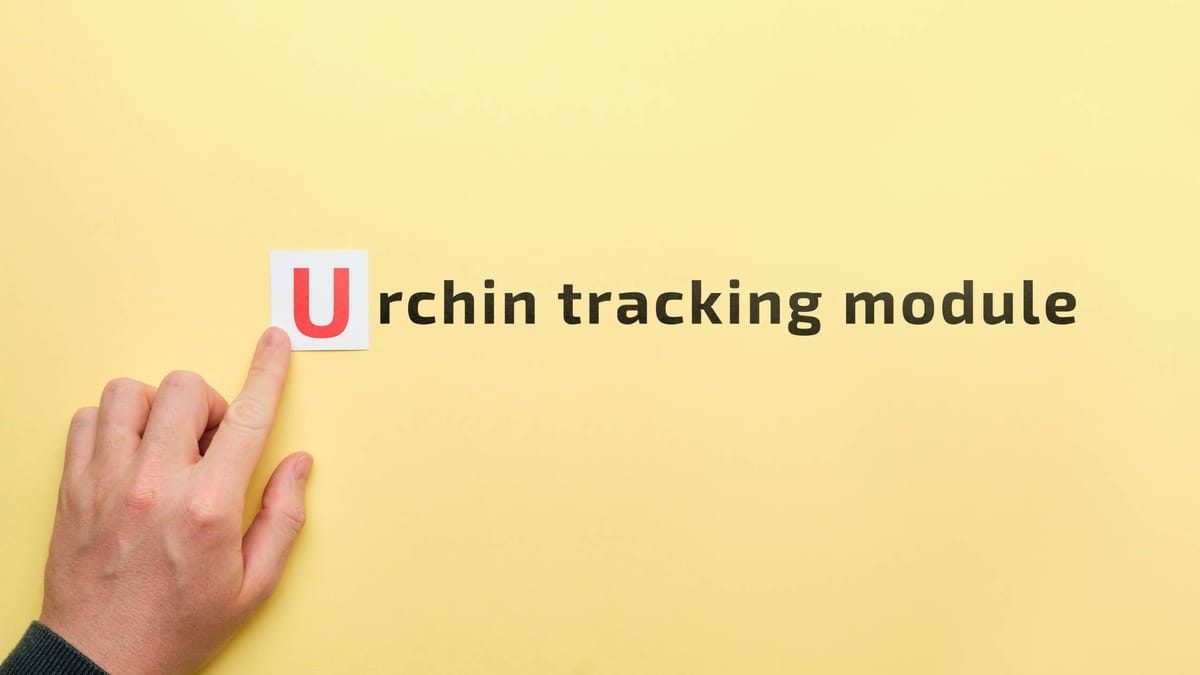
Why UTM Parameters Matter for Social Media
Social media platforms give you their own analytics—impressions, likes, comments, shares—but these are surface-level. They don’t tell you whether your content actually worked in terms of driving real business outcomes. UTMs fill that gap by connecting off-platform engagement with on-site behavior.
Here’s why they matter:
utm_content and track the results.Example: I once ran the same campaign on LinkedIn and Twitter. LinkedIn got more likes, but UTMs showed that Twitter actually generated more conversions. Without UTMs, I would have invested more time in the wrong platform.
How to Create UTM Links
There are several ways to build links with UTMs:
➡️ Manually. Add parameters directly to your URL. This works, but it’s easy to make mistakes if you’re not consistent.
➡️ Google’s Campaign URL Builder. A free tool where you fill in fields and get a UTM-tagged link instantly.
⭐ Social media management tools. The easiest option is using tools like Circleboom Publish that integrate a UTM generator right into the post-creation flow.
When you start, keep your UTMs simple: source, medium, and campaign. As you grow, experiment with utm_content for creative testing or utm_term for ads.
Circleboom Publish: My Favorite All-in-One Way to Create, Tag, and Schedule UTM-Ready Posts
Out of all the methods, my favorite way is using Circleboom Publish.

It’s more than a scheduler—it’s a full social media management tool. From one dashboard, you can:
- Write posts using the built-in AI Writer,
- Design visuals and attach media,
- Schedule posts across multiple accounts and platforms,
- Add UTM parameters automatically with the UTM Generator,
- And shorten links so they look clean.
Instead of switching between different tools for writing, tagging, and scheduling, Circleboom does it all in one place. Let me show how I used Circleboom to create Facebook posts with UTM.
Here’s how to use it step by step:
Step #1: Log in and Connect Your Facebook Account
Start by logging into Circleboom Publish. If you don’t already have an account, you can create one for free in just a few seconds.
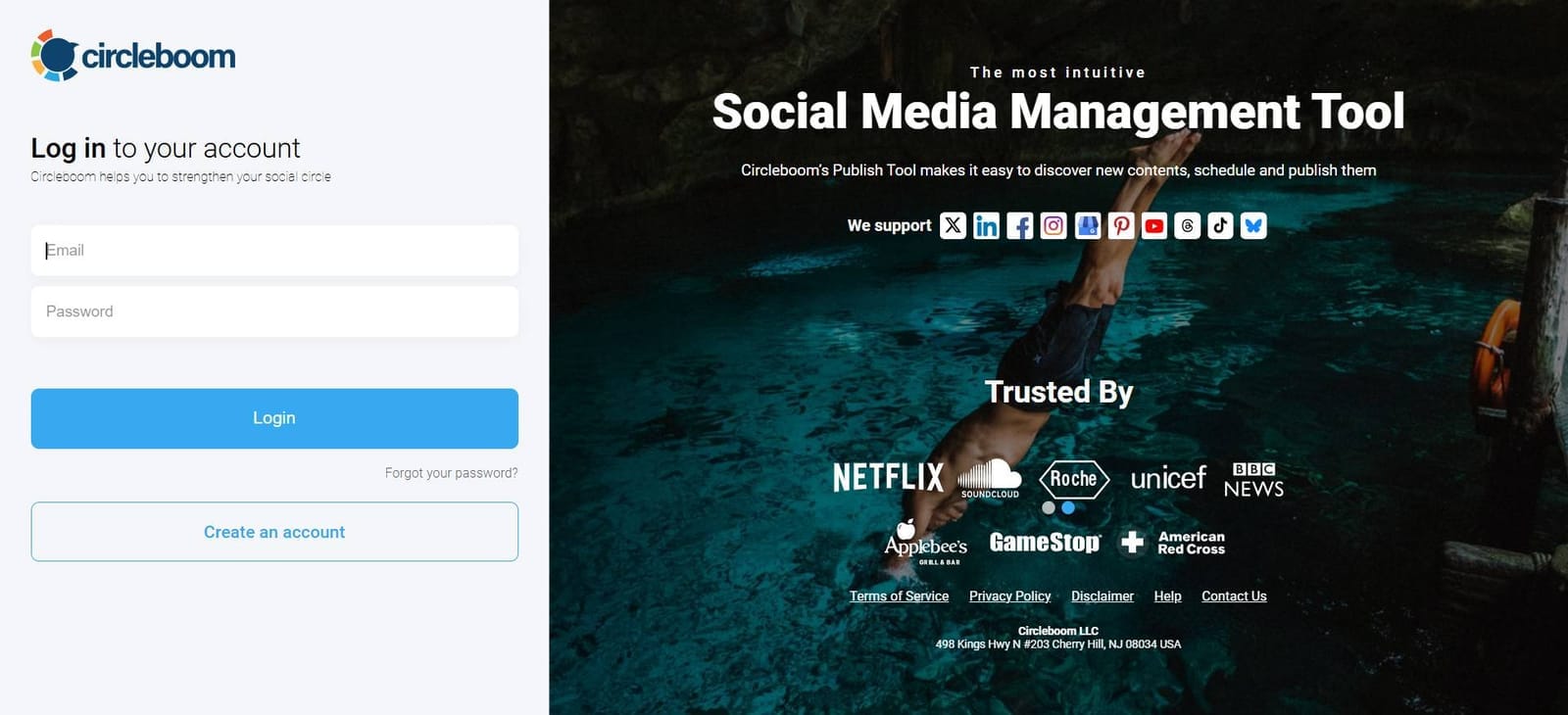
Once you're inside, connect your Facebook Page or Profile. Circleboom also supports platforms like Instagram, LinkedIn, Google Business Profile, Pinterest, and more, but for now, just focus on Facebook.
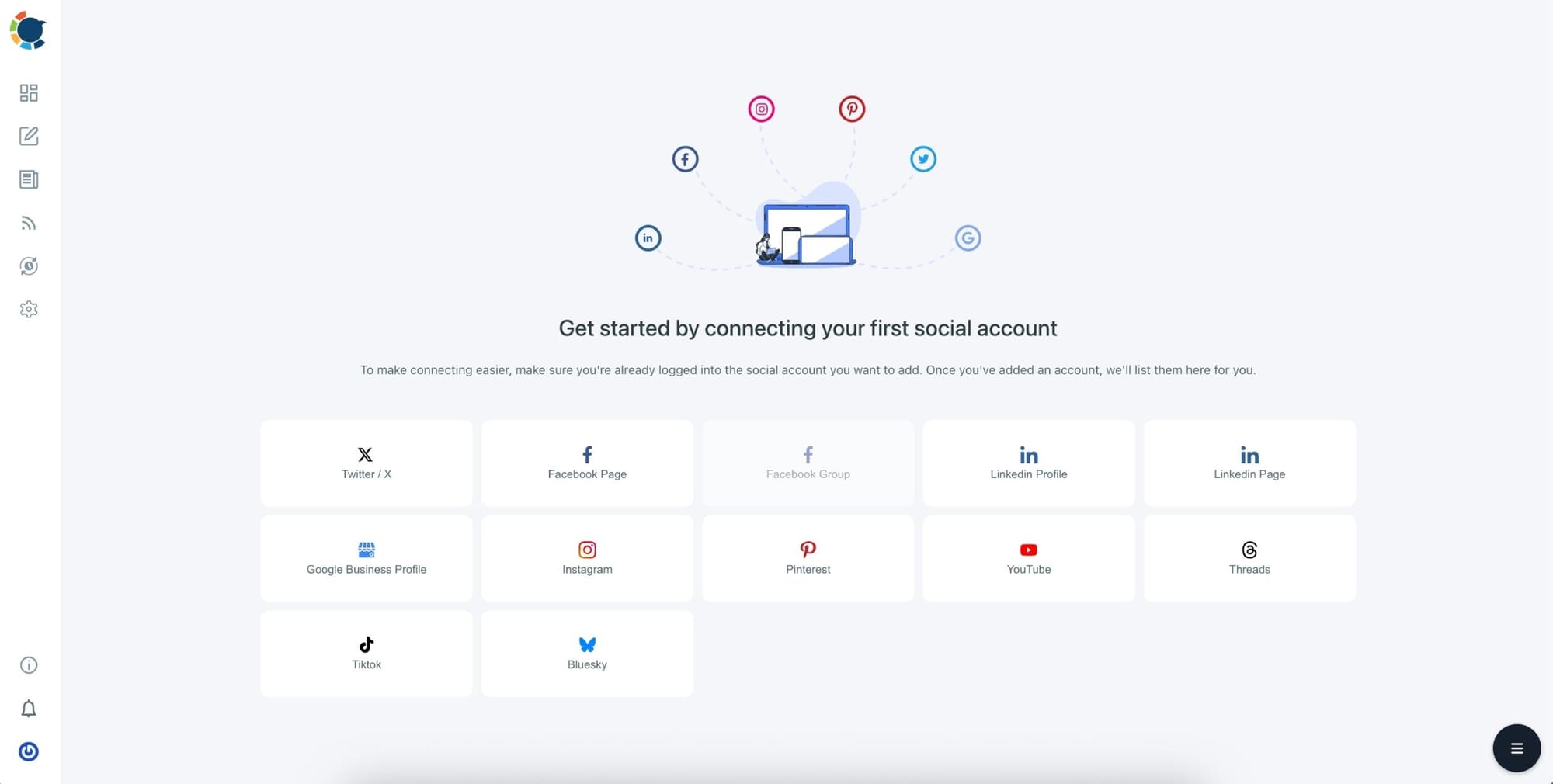
You can manage multiple accounts from a single dashboard without switching tabs or tools.
Step #2: Create a New Facebook Post
Click the “Create New Post” button from the dashboard. Then choose whether you're creating a regular Facebook post, a Reel, or a Story.
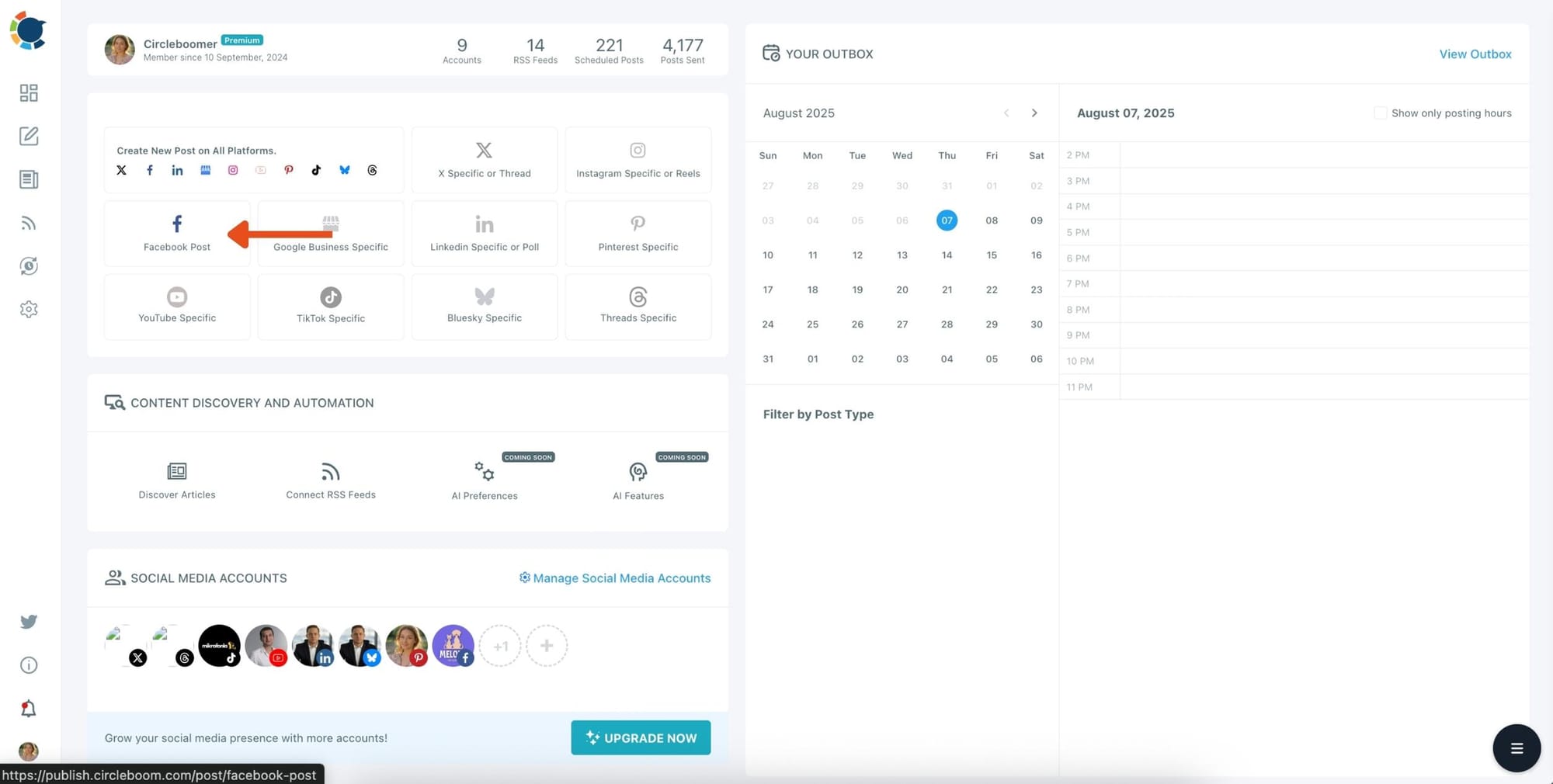
The editor will open, showing your writing area on the left and a live preview on the right.
This gives you a full view of what your content will look like before it goes live.
Step #3: Generate Content with AI
If you want help writing the post, use Circleboom’s built-in AI Post Generator. It’s powered by ChatGPT-4 and can craft engaging captions for you in seconds.
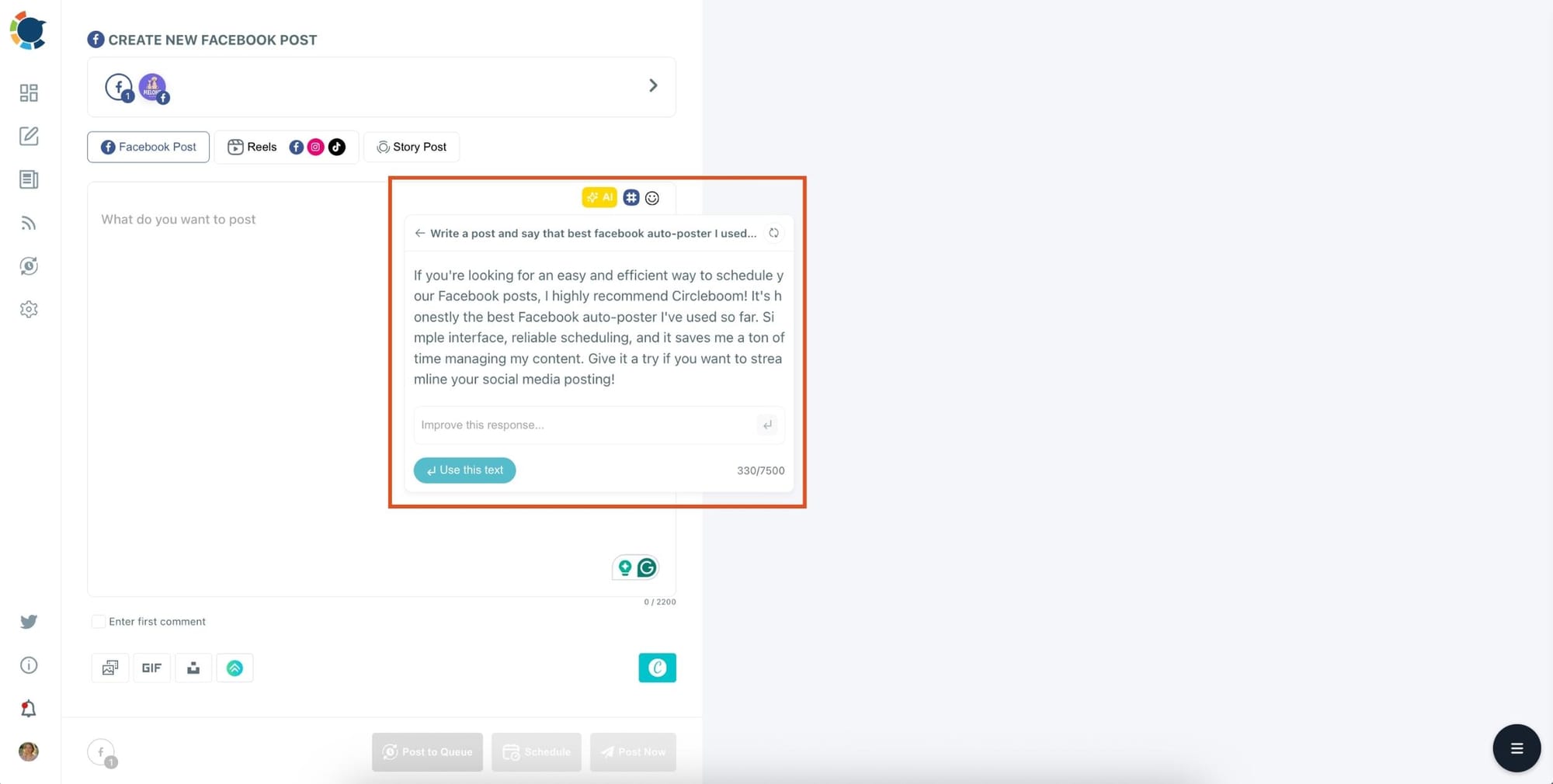
You can set the tone, add emojis, generate hashtags, and even translate or grammar-check the content—perfect for marketers and creators who want to save time while staying professional.
Step #4: Add Visuals Using the Built-In Tools
You can upload your own images or choose from four built-in sources. Canva is fully integrated, so you can design your post visuals using ready-made templates and editing tools without leaving Circleboom.
If you prefer free stock photos, use Unsplash. For animated content, Giphy is also available, and you can even pull media directly from your Google Photos account.

Step #5: Paste Your Link and Add UTM Parameters
After writing your caption and adding an image, paste the URL you want to share. To make this link trackable, click the link icon (🔗) next to it to open Circleboom’s built-in UTM builder.
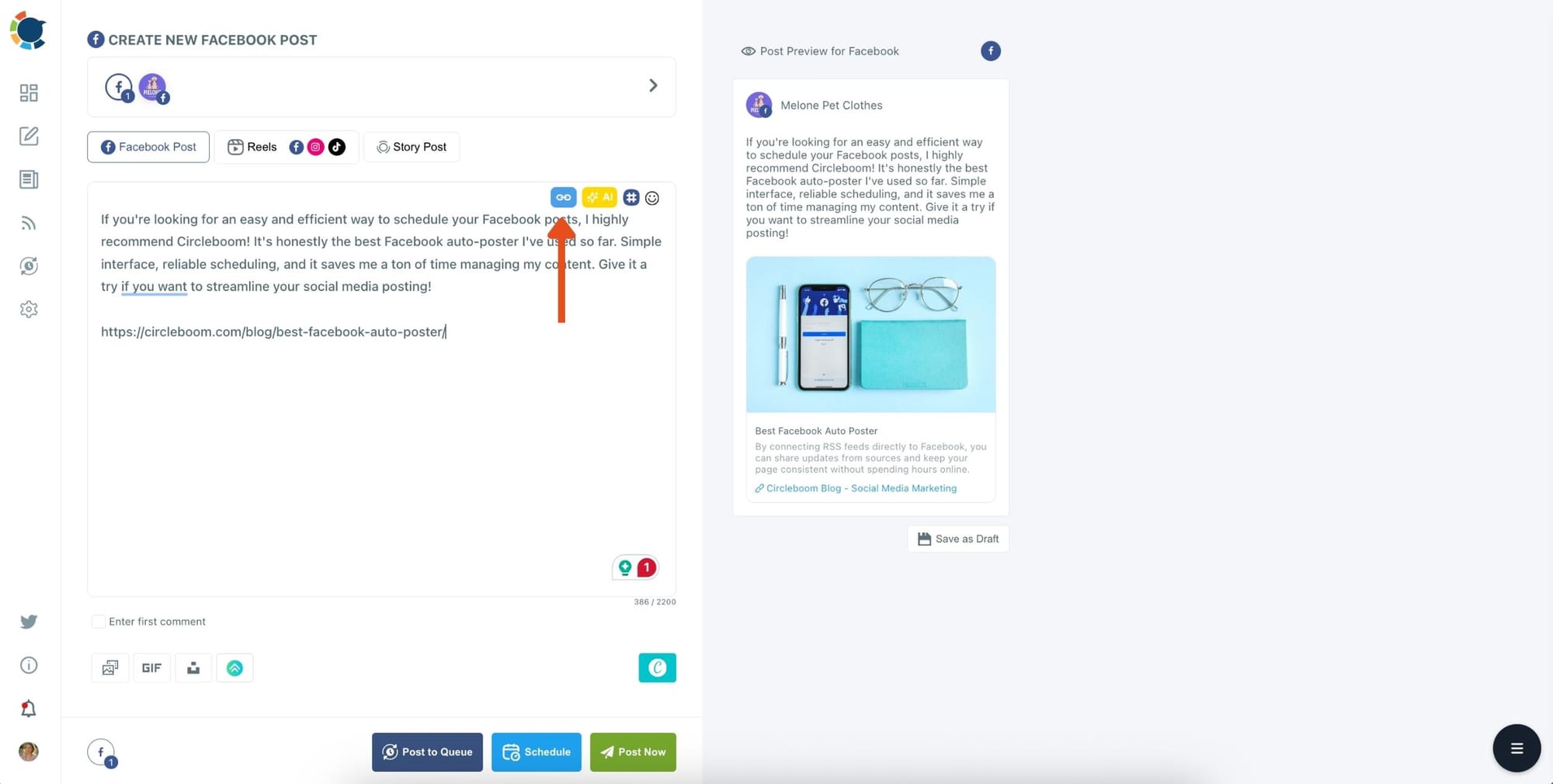
Here you can add:
- Campaign Source (e.g.,
facebook-feed,circleboom) - Campaign Medium (e.g.,
social,organic) - Campaign Name (e.g.,
summer_promo,blog_launch) - Campaign Content (optional – to distinguish different versions of a post)
As you enter these values, Circleboom automatically creates a full UTM-tagged URL and replaces the original link in your post. You don't have to use external tools or worry about formatting errors—everything is handled directly in the editor.
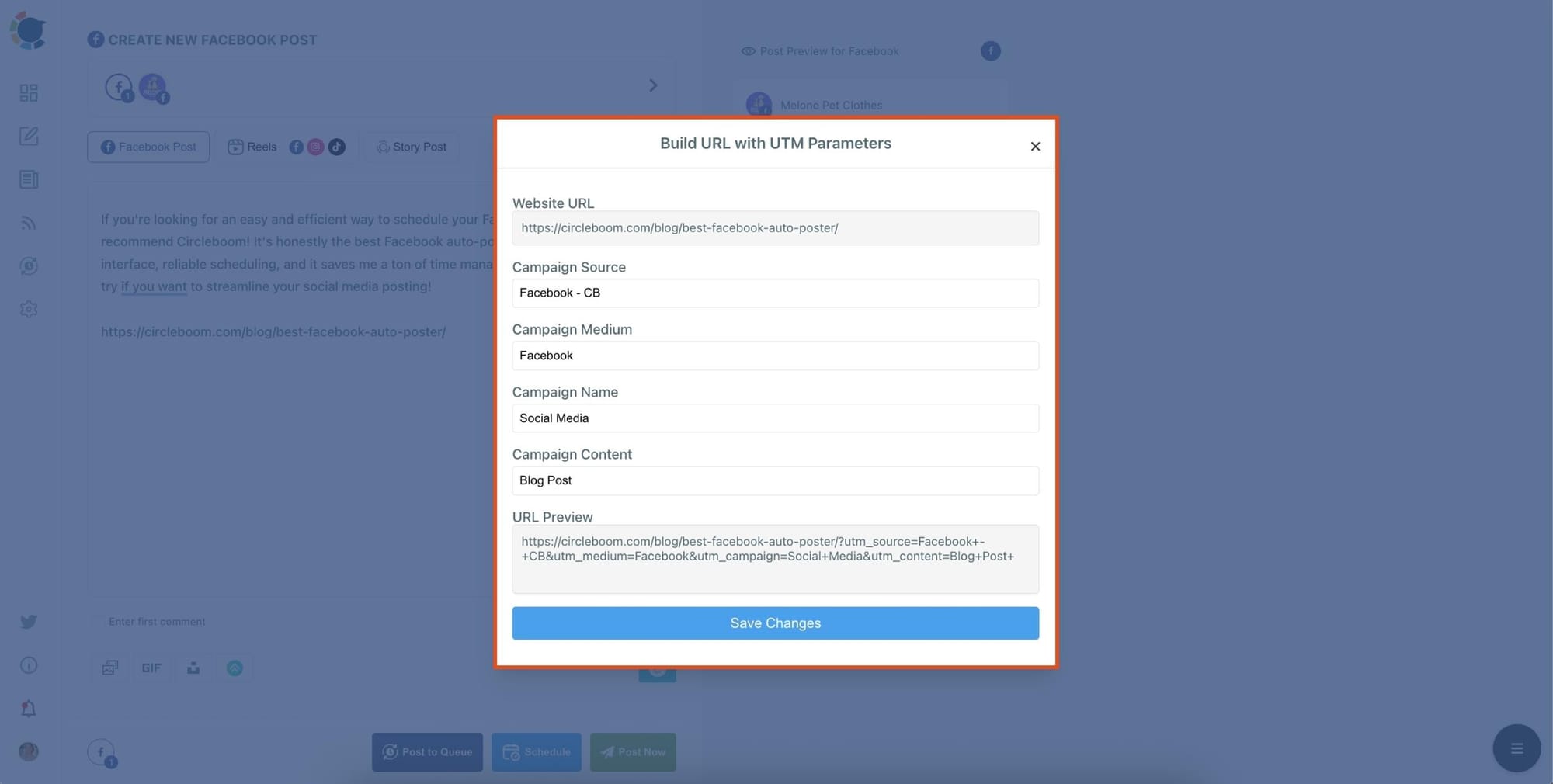
Step #6: Schedule Your Post or Publish Instantly
Once everything looks good, you can either publish your post immediately by clicking “Post Now,” or schedule it for later.
Circleboom will even analyze your audience's behavior and suggest the best time to post based on when your followers are most active. This way, you’re not just posting—you’re posting smart.
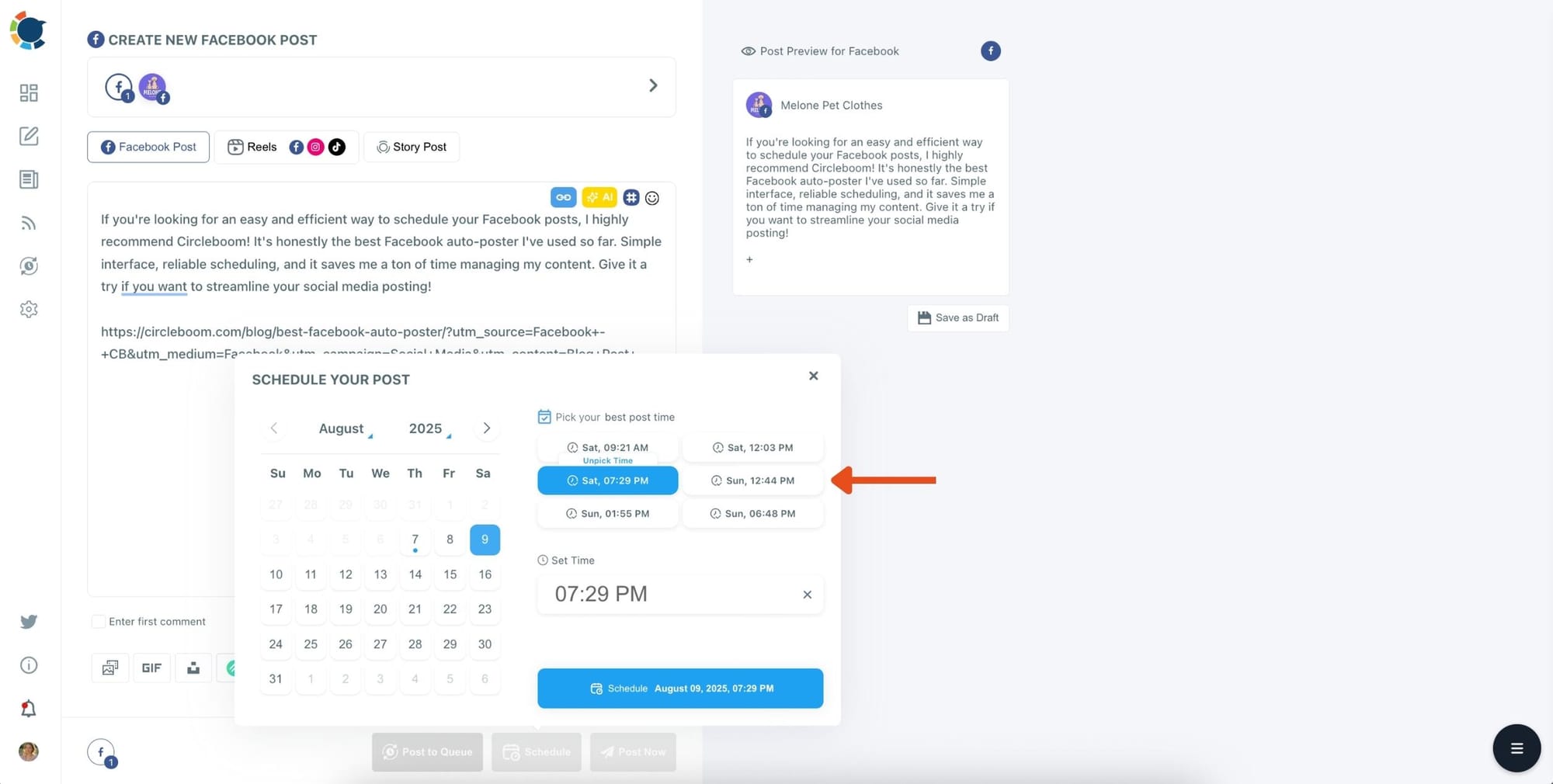
Once published, your UTM-tagged links flow directly into Google Analytics. From there, you can track performance and compare across platforms.
How to Track and Analyze UTMs
Once your posts are live, open Google Analytics to analyze performance. In GA4:
- Navigate to Reports → Acquisition → Traffic acquisition.
- Filter by Session campaign to see traffic grouped by your
utm_campaignnames. - Drill into Session source/medium to compare platforms.
- Add Session content to check which creative version performed best.

This tells you not only how many clicks came in, but whether those visitors stayed, explored, or converted.
Example insight:
Twitter delivered 400 visits, average time 30 seconds, 5 conversions.
LinkedIn delivered 150 visits, average time 2 minutes, 20 conversions.
More clicks didn’t mean better performance—LinkedIn traffic was far more valuable.
How to Evaluate the Results
Numbers alone don’t drive strategy—interpretation does. Here’s how to evaluate what you see:
- Traffic vs. conversions. High traffic with low conversions might mean your message attracted clicks but not the right audience.
- Engagement depth. Look at time on site and bounce rate. If visitors leave quickly, your content or landing page needs adjustment.
- Campaign comparisons. Measure which campaign names (like
summer_launchvs.q4_report) produced better results and double down on what worked. - Format testing. If your
utm_contentshows videos beat images, prioritize video in your next campaign. - Goal alignment. Match evaluation to your objective. If the campaign was for awareness, traffic volume matters. If it was for sales, conversions matter more.
This evaluation process turns UTMs into real strategic guidance instead of just another report.

Best Practices for Using UTMs
UTMs are only as useful as the discipline you apply when creating them. Here’s how to keep your data clean and actionable:
- Use consistent naming conventions. Decide on a standard (e.g., always lowercase, always spell out
linkedin) and never deviate. “LinkedIn” vs. “linkedin” creates two separate buckets in reports. - Keep parameters lowercase. Analytics tools treat “Twitter” and “twitter” as different sources. Lowercase eliminates duplicates.
- Focus on the essentials. Most of the time,
source,medium, andcampaignare enough. Adding too many parameters creates clutter and confusion. - Shorten links for sharing. Long UTM-tagged URLs can look messy. Circleboom’s shortener or Bitly keeps them clean while preserving tracking.
- Document your structure. Keep a shared reference sheet so your team always knows the right way to tag links.
Advanced Tips
Once you’re comfortable with the basics, you can unlock even more insights:
💡 Separate organic vs. paid posts. Use utm_medium=social for organic posts and utm_medium=paid_social for ads. This helps you see the ROI of your paid spend clearly.
💡 A/B test creatives. Use utm_content to compare post variations. For example, tag one as image and another as video to see which drives more sign-ups.
💡 Track influencer or partner campaigns. Give influencers a unique UTM link so you can measure exactly how much traffic and how many conversions they delivered.
💡 Measure funnel stages. Use utm_campaign to label where users are in the funnel, like awareness_campaign vs. retargeting_campaign.
Common Mistakes to Avoid
Even marketers who know UTMs make errors that ruin their reports. Watch out for these:
❌ Using vague names. Campaigns called “test1” or “new_campaign” won’t mean anything when you revisit reports in six months. Be descriptive and consistent.
❌ Forgetting UTMs entirely. Posting links without tags breaks the chain, and you lose valuable tracking data.
❌ Mixing inconsistent labels. Writing “FB” in one campaign and “facebook” in another splits your data into separate categories.
❌ Overcomplicating. Adding too many parameters creates confusion. Stick to what you’ll actually use in reporting.
Conclusion: Turn Every Post Into a Measurable Campaign
UTM parameters may look small, but their impact is huge. They transform social media from vanity metrics into a measurable, data-driven channel.
By tagging your links consistently, analyzing results in Google Analytics, and using tools like Circleboom Publish to create, tag, and schedule in one place, you gain clarity on what really works.
Every social post becomes more than just content—it becomes an experiment. With UTMs, you don’t just share; you learn, optimize, and grow.
✅ Stop guessing. Start measuring. And let every click tell you a story.




